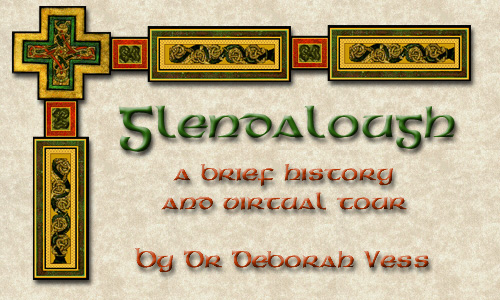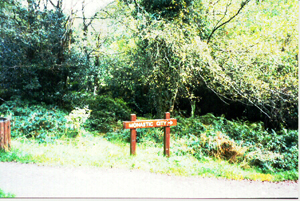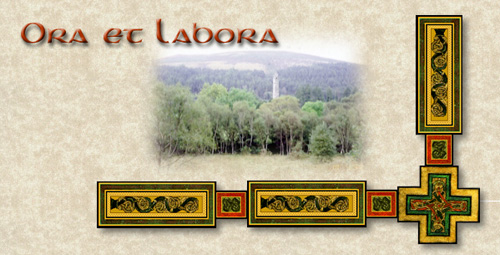
|
The Green Road and the Lower and Upper LakesKevin, like all Irish saints, had a strong streak of eremiticism and asceticism. He eventually left the community he had founded to live a short distance away as a hermit. He was close enough to come to the community's aid when needed, but far enough away to enjoy the solitude and to deeply immerse himself in prayer.
To take a longer virtual walk along this beautiful path, click here for a quicktime slide show video.
Kevin eventually went further down the Green Road to his hermitage at the Upper Lake, and according to his biographers, took the monster along with him when he moved. This interesting story must be read, like all medieval works, on not only a literal level, but also a metaphorical, allegorical, and tropological level. This is a story of a man who carefully examined his inner self, found the monsters lurking within the blackness, and then came to know them so much so that he carried them with him and kept them close to him wherever he went. The monsters that are unseen can do much more damage than those that are known and understood.
If you would like to get a better idea of the cell in its surroundings, click here for a quicktime slide show video. This side of the upper lake remains dark for six months out of every year. Symbolically, then, St. Kevin lived in his own darkness here. The monastic way is, at its heart, a journey of self-discovery, of coming to know the dark areas that keep us from ourselves and so keep us from God. The word "cell," means "church," and throughout Ireland, places with this word in it refer to churches. In this cell, St. Kevin often prayed with his arms outstretched in the form of the cross. This is a very painful was to pray, which the Irish ascetics learned to do for hours on end. During one such fervent period of prayer, St. Kevin had his arms outstretched when a blackbird perched on his hand and laid an egg. According to legend, St. Kevin remained in that position unmoved until the egg hatched, so as not to disturb nor damage the baby chick within the egg. On a literal level, it is difficult to believe this story, yet on a metaphorical level, the story is an allegory about stability,a story about perseverance in times of difficulty. It is a story about nourishing carefully and tenderly those fragile things in our lives that might break at any moment, but with love will bring forth new life.
To explore a later Celtic hermitage, visit my virtual tour of St. Finbarr's Hermitage in Gougane Barra. If you are interested in the eremitical life, you might also want to visit my virtual tour of the hermitage of Robert of Knaresborough, a twelfth-century English hermit.
Continue to the next page: Virtual Tour of Glendalough: St. Kevin's Desert Return to the Index of Celtic Monasticism
|
 Let's leave the monastic
city behind for the solitude of the Upper Lake, as Kevin did so many
years before us.
Let's leave the monastic
city behind for the solitude of the Upper Lake, as Kevin did so many
years before us. 